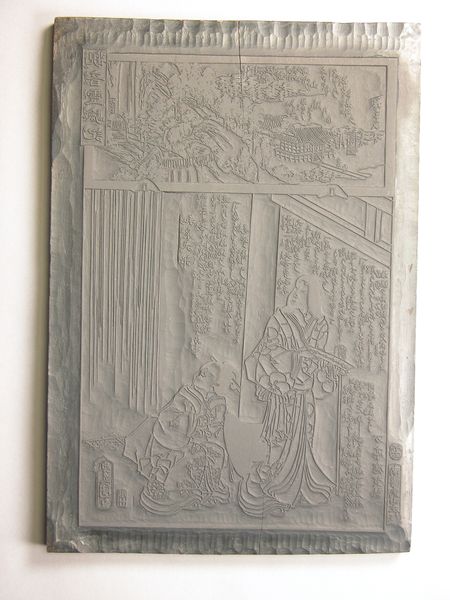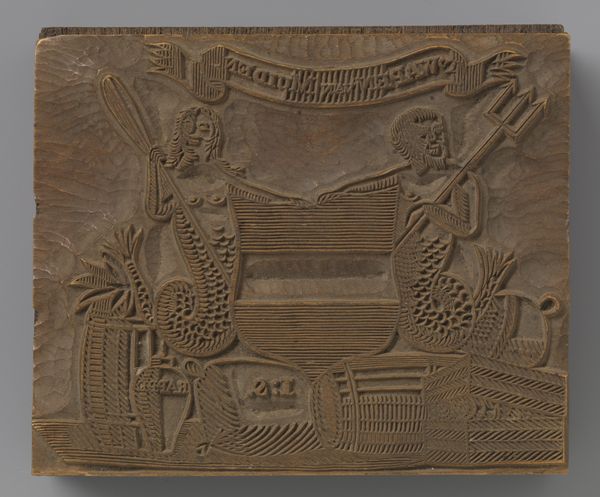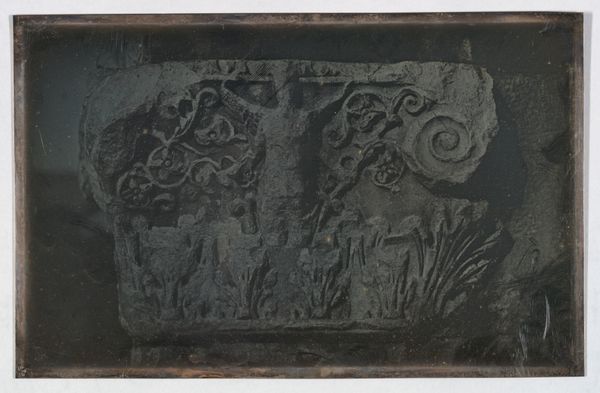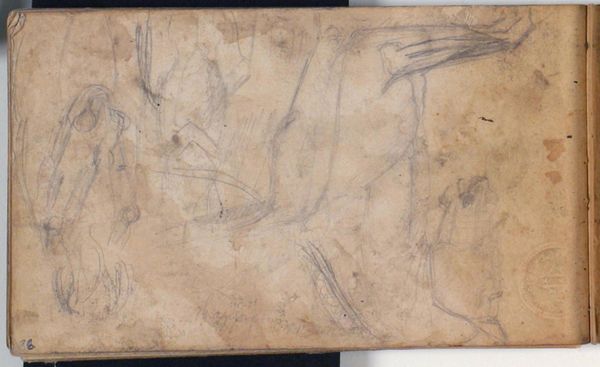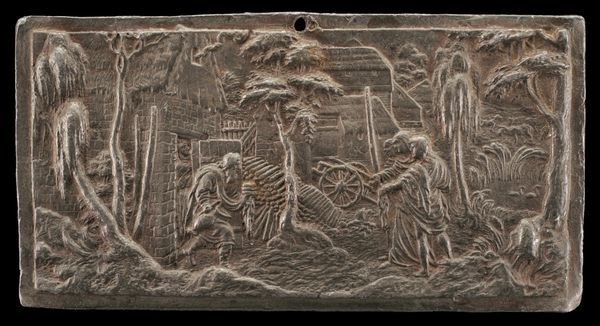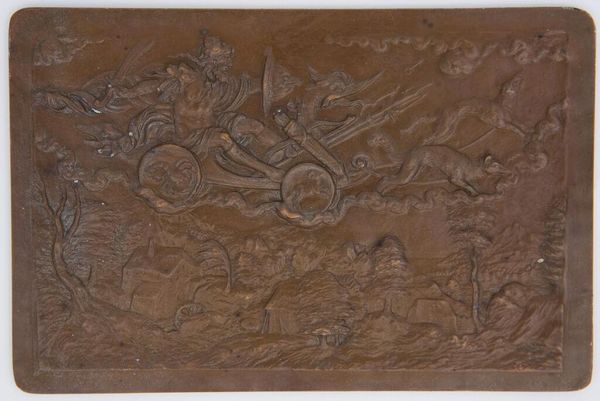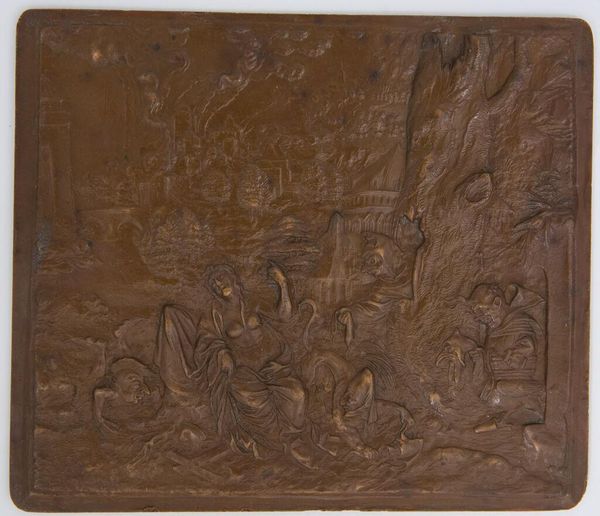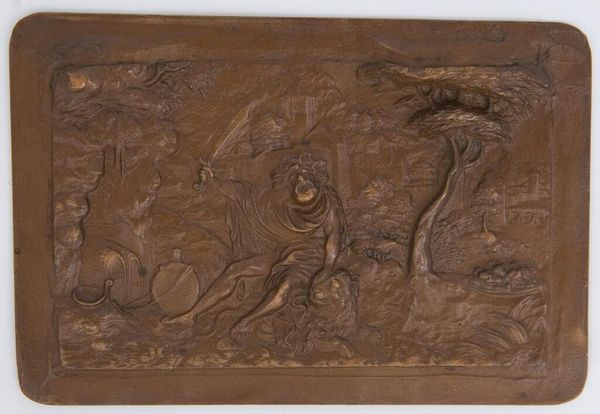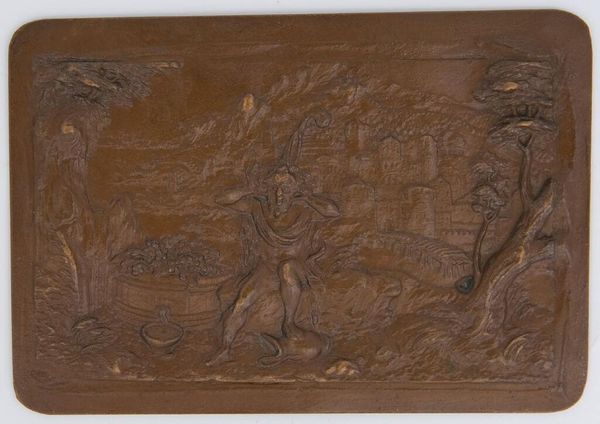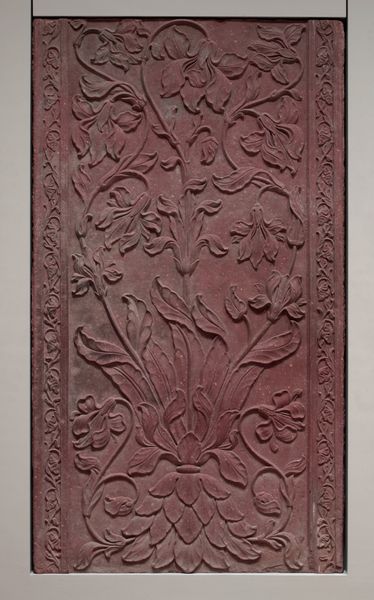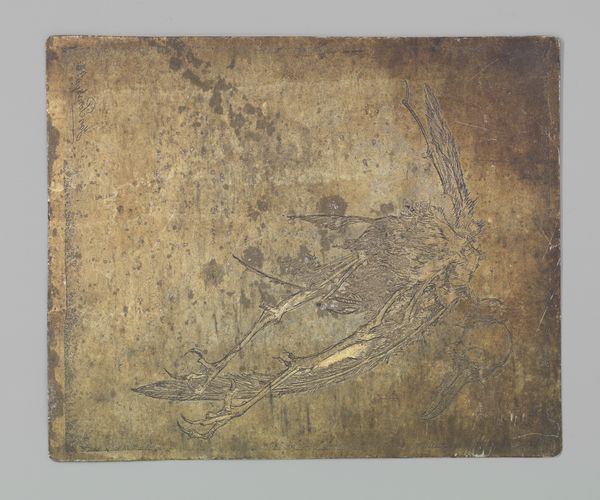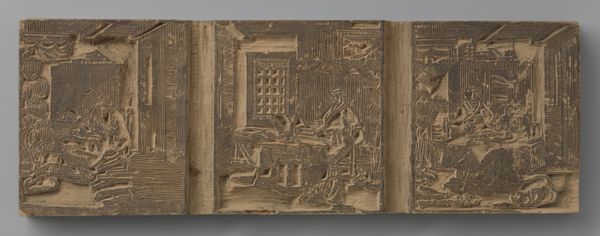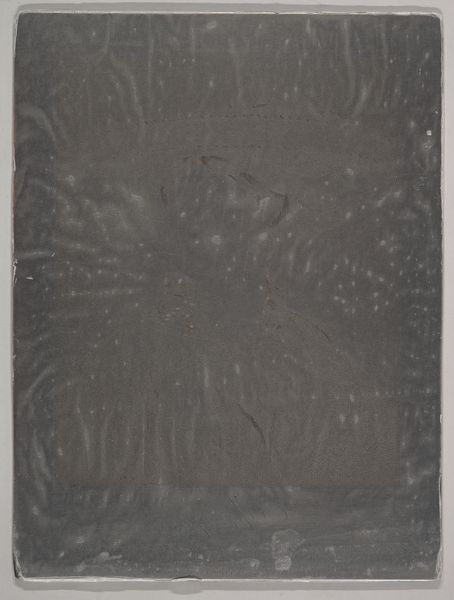
Woodblock for an Illustration by Nishikawa Sukenobu 18th century
0:00
0:00
print, woodblock-print, woodcut
# print
#
asian-art
#
ukiyo-e
#
japan
#
woodblock-print
#
woodcut
#
men
#
history-painting
Dimensions: 10 5/8 x 9 11/16 in. (27 x 24.6 cm)
Copyright: Public Domain
Curator: Here we have an 18th-century woodblock crafted for an illustration by Nishikawa Sukenobu. Currently held at the Metropolitan Museum of Art, it's a compelling glimpse into ukiyo-e printmaking. What are your initial impressions? Editor: My first thought is the sheer skill involved. It feels simultaneously delicate and strong. There’s such economy of line to communicate gesture and detail, but it also carries the weight of the entire historical context of labor. I’m seeing the clear cultural heritage here. Curator: Absolutely. It exemplifies the Edo period's artistic sophistication. This is a woodblock; it had to be perfect for all details in the finished image to come through. It must also be read in reverse of what we’re used to, where every single line represents a choice made by both the artist and the carver in question. It also reflects values about design at the time and its potential meanings for the intended viewers of such imagery. We see, for example, two figures interacting near steps; water with flying birds too, signifying a certain level of movement or progress of a narrative. Editor: Speaking of narrative, is this an interpretation of some well-known literary scene or story? Were these men, in this setting, ever given room to question hierarchies in these traditions? The passivity of one’s posture versus the actions and clothing worn of another make this seem possible but improbable given how carefully designed clothing could mark someone’s class status at this time, both on the street and in visual culture like the floating world prints the artwork led to. Curator: Ukiyo-e often depicted scenes from everyday life and popular culture, frequently connected to theatrical or literary settings. Sukenobu was known for illustrations accompanying various books, though knowing which story would need more context. But the composition itself plays a significant role. These receding lines of the steps are guiding our sightlines directly to the figures; the background gives atmosphere. A whole narrative rests on these carvings! Editor: Indeed! The precision, restraint, and depth remind me that everything communicates. A pause for such care seems almost impossible to imagine today, where we value a continuous race for technological developments over cultural understanding and nuance. Curator: Well, it certainly gives you a moment to pause and consider an era with its symbolic depths, cultural aspirations, and aesthetic beauty! Editor: And hopefully encourages folks to reexamine what we prioritize going forward.
Comments
No comments
Be the first to comment and join the conversation on the ultimate creative platform.
